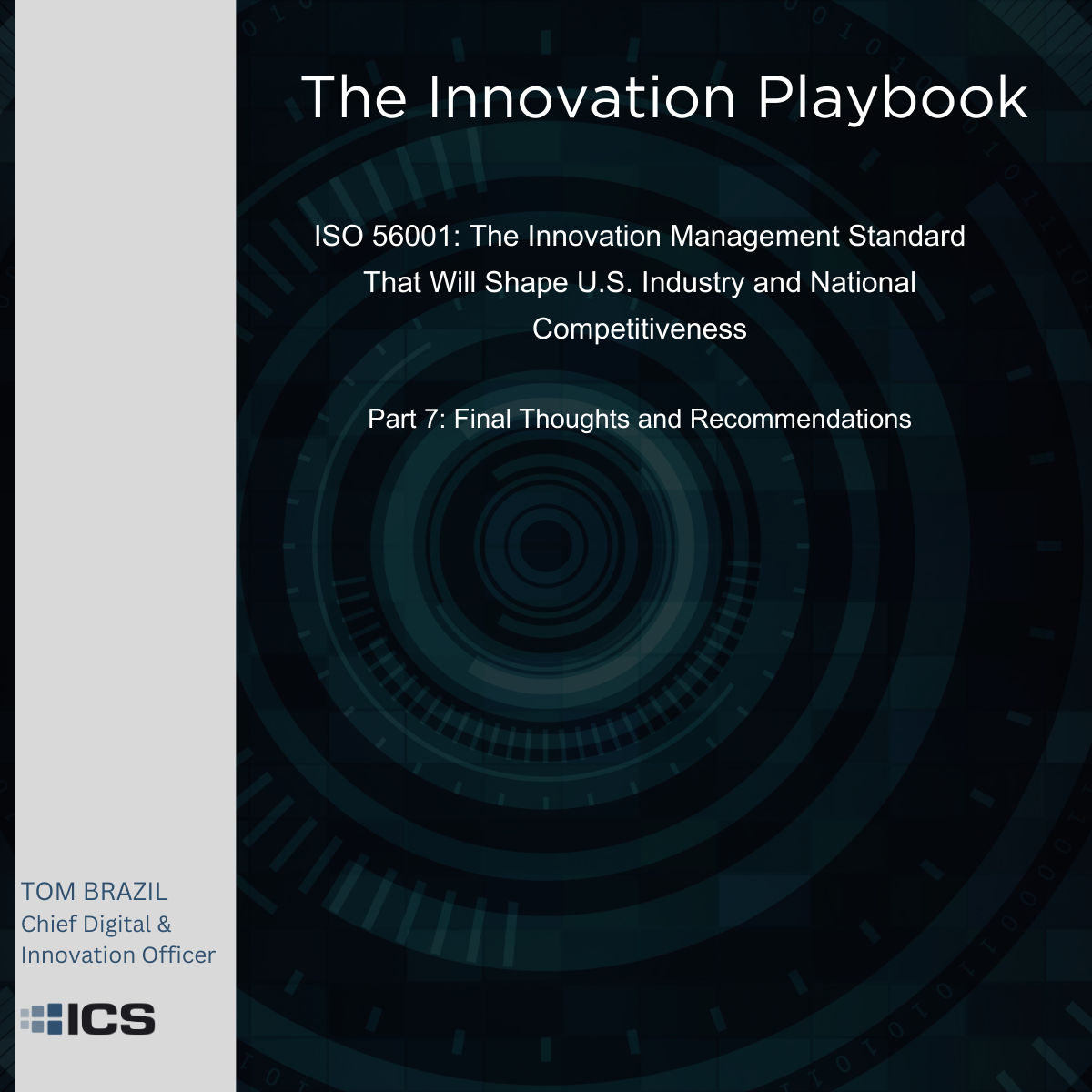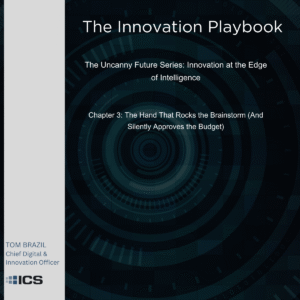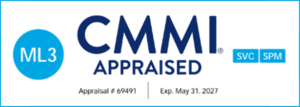For the past six weeks, we’ve explored ISO 56001 from every angle—what it is, why it matters, how organizations can implement it, and how the world is already embracing structured innovation management. Now, as we conclude this series, the question remains:
What should U.S. businesses and government agencies do next?
The answer is clear: adopt ISO 56001, not just as a certification, but as a strategic framework for long-term innovation success. The global economy is shifting toward systematic, measurable, and high-impact innovation management, and organizations that fail to align will struggle to compete.
But there are still many misconceptions, uncertainties, and practical challenges that leaders must address. Today, we’ll cover the three most important takeaways for executives, how to get started, and where to find resources to support implementation.
The Three Most Important Things Every Business Leader Should Know About ISO 56001
First, innovation is no longer just a creative process—it is a business function that requires structure, governance, and performance measurement. Too often, organizations treat innovation as something that “just happens” rather than something that needs strategic leadership, dedicated resources, and accountability mechanisms. ISO 56001 ensures that innovation is not an accident, but an intentional, repeatable driver of growth.
Second, leadership is the deciding factor in whether structured innovation succeeds or fails. Without commitment from the top, even the best innovation frameworks will fail to gain traction. Leaders must do more than approve innovation budgets and attend occasional strategy meetings—they must actively champion a culture where experimentation is encouraged, risk is managed, and breakthrough ideas are systematically developed into commercial success.
Third, ISO 56001 certification is an opportunity, not a burden. Many companies resist structured innovation management because they fear it will add bureaucracy, slow down creativity, or require unnecessary documentation. The reality is quite the opposite. ISO 56001 provides the framework to remove inefficiencies, align innovation with business strategy, and ensure that time and resources are spent on initiatives that drive real value. In industries like defense, aerospace, healthcare, and financial services, ISO 56001 certification may soon become a competitive necessity for securing contracts and partnerships.
Advice for Companies Considering ISO 56001 for the First Time
For organizations looking to adopt ISO 56001, the best approach is to start small, learn from experience, and gradually expand implementation. This is not a standard that requires a complete transformation overnight. Companies that start with a focused pilot program—perhaps within a specific division or product line—can learn what works before scaling their innovation management system company-wide.
The first step is conducting an internal assessment to evaluate where innovation currently succeeds and where it falls short. Do ideas frequently stall before reaching commercialization? Are R&D investments producing measurable returns? Is innovation aligned with the company’s long-term strategy? These questions help identify where ISO 56001 will create the most immediate value.
Once the gaps are understood, executives must commit to integrating structured innovation into the company’s operations. That means dedicating resources, setting performance metrics, and ensuring that innovation is treated as a strategic function, not an isolated effort. It also means aligning cross-functional teams, breaking down silos, and ensuring that innovation leaders have a direct line to decision-makers.
A phased implementation ensures that early successes build momentum for broader adoption. Organizations should begin by applying ISO 56001 principles to one innovation initiative at a time, measuring the outcomes, and refining processes before rolling them out on a larger scale.
Where to Find Additional Resources, Training, and Support
As interest in ISO 56001 grows, so do the available resources for businesses looking to adopt structured innovation management. Organizations such as the International Organization for Standardization (ISO), national standards bodies, and professional training institutes offer certifications, workshops, and implementation guides tailored to specific industries.
Companies with existing ISO certifications, such as ISO 9001 (Quality Management) or ISO 27001 (Information Security), can integrate ISO 56001 into their existing compliance frameworks, making the transition smoother.
Many consulting firms and advisory groups now specialize in innovation management implementation, providing tailored support for organizations navigating the complexities of ISO 56001 certification. This is especially important for industries where compliance, security, and regulatory alignment are critical. Even more, since ISO 56001 is a Management System Standard (MSS), several certifying organizations offer packaged deals to handle all MSS certifications for an organization, which is much cheaper overall. One such company is IMS Professionals (www.imsprofessionals.com) which has leadership that contributed to the creation of the ISO 56000 series of standards.
For businesses that want to learn from global best practices, innovation conferences and professional networks provide valuable case studies and peer insights. Countries that have already embraced structured innovation management—such as Germany, South Korea, and China—offer lessons on how businesses and governments can align to drive technological leadership.
Common Misconceptions About ISO 56001
Some organizations hesitate to adopt ISO 56001 because of misconceptions about what the standard entails. One of the most persistent myths is that ISO 56001 is only for large corporations with formal R&D departments. In reality, ISO 56001 is designed for businesses of all sizes, from startups to multinational enterprises. Small and mid-sized companies can benefit just as much—if not more—by embedding a structured approach to innovation that helps them scale efficiently and compete globally.
Another misconception is that ISO 56001 stifles creativity by imposing too much structure. In fact, ISO 56001 ensures that creativity translates into impact by providing the governance needed to fund, develop, and commercialize breakthrough ideas. It eliminates the inefficiencies that cause innovative concepts to die in the pipeline.
Some also believe that ISO 56001 is just another compliance requirement with no real business value. This view is outdated. Companies that have adopted structured innovation management see higher returns on R&D investment, faster time-to-market for new products, and increased market share in competitive industries.
And finally, there’s the belief that ISO 56001 is just another passing trend. That could not be further from the truth. Countries like China, Germany, and South Korea are already embedding ISO 56001 principles into their national innovation strategies. The U.S. must decide whether it wants to lead in defining global innovation standards or simply follow the frameworks established by other nations.
Final Thoughts: The Future of U.S. Innovation in an ISO 56001 World
The world is shifting toward a new era of structured innovation management. ISO 56001 provides the framework, the tools, and the roadmap for organizations to build repeatable, high-impact innovation systems. Companies and government agencies that adopt it early will set the benchmark for global competitiveness. Those that delay risk falling behind in the race for technological leadership.
As industries from aerospace to healthcare to cybersecurity begin integrating ISO 56001-certified innovation frameworks, the organizations that move first will gain the most significant strategic advantage. Whether it’s securing defense contracts, developing game-changing AI solutions, or driving sustainability breakthroughs, structured innovation will separate the leaders from the laggards.
The future of U.S. innovation is at a crossroads. The question is no longer “Should we adopt ISO 56001?” The real question is “How fast can we do it before the rest of the world leaves us behind?”
The time to act is now.
Are U.S. businesses and government agencies ready to lead in structured innovation? Let’s start the conversation.
Thank you for following this series on ISO 56001 and its impact on U.S. industry, government, and global competitiveness. If you found this series valuable, share your thoughts, challenges, and experiences in the comments below. Let’s keep the conversation going.







